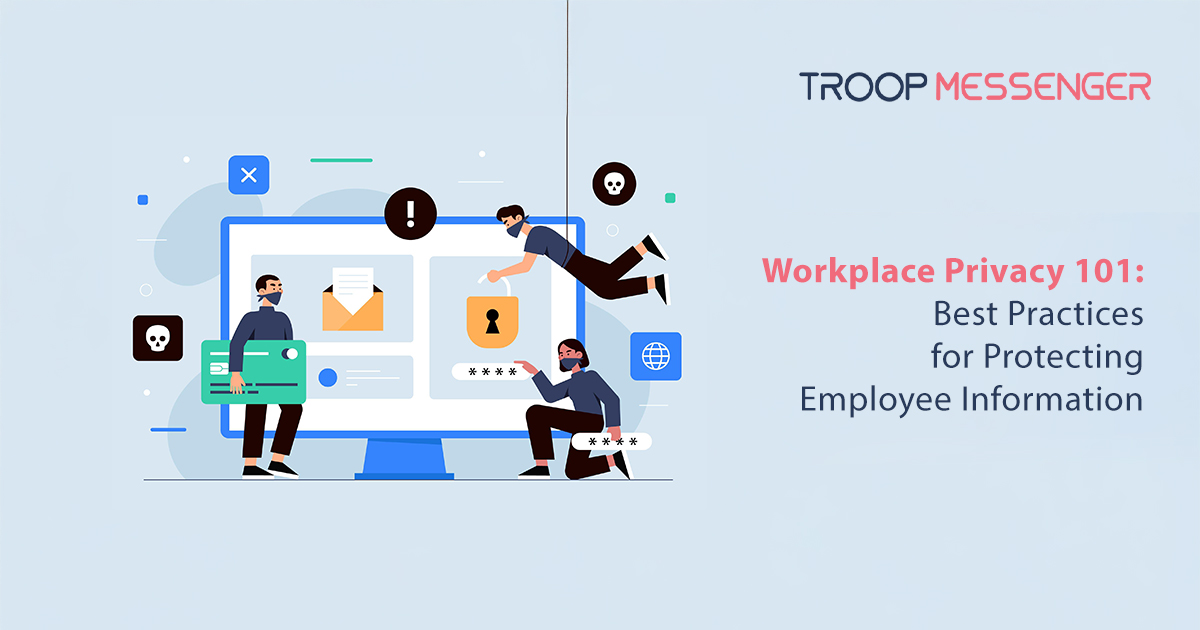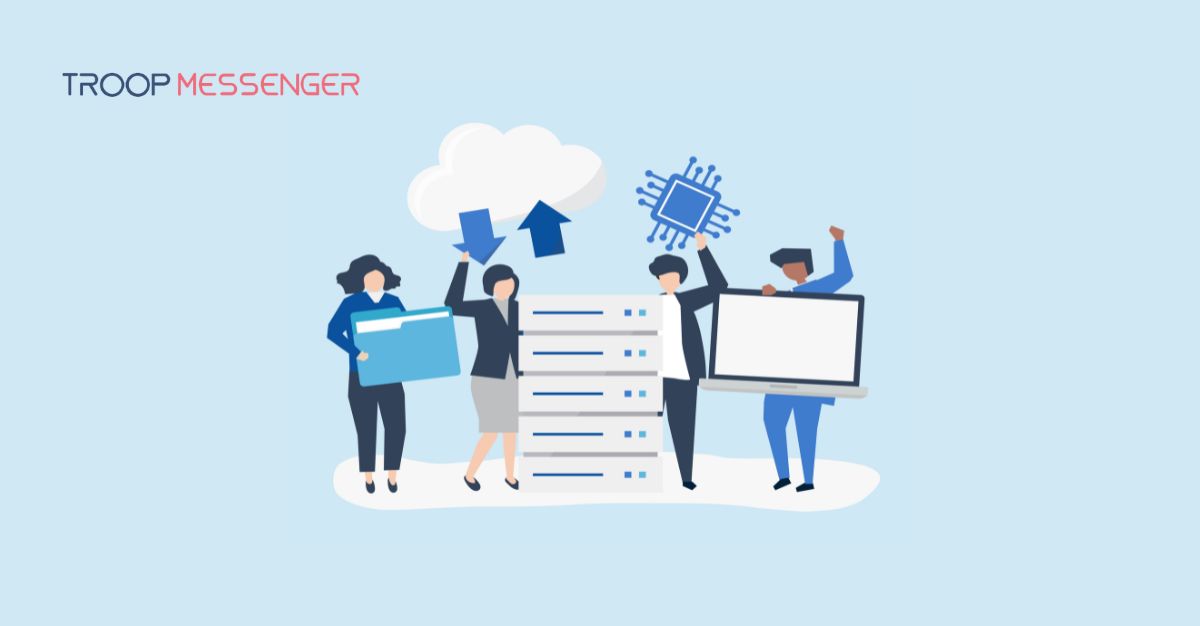Connect with us

Workplace Privacy 101: Best Practices for Protecting Employee Information
Companies know a lot about their employees – so handling employee data properly is crucial for any organization. And so, naturally, protecting this info should be at the top of every company’s priorities.
So, let’s take a look at ways to protect employee information, explore real-world examples, and identify the most effective data security methods.
Why Workplace Privacy is So Important
Think about it: companies store huge amounts of sensitive personnel records, which include not only home addresses, but also extremely confidential information such as Social Security Numbers, financial details, medical records, family contact info...
The sheer volume of personal data held by organizations makes them prime targets for cybercriminals.
Imagine the repercussions of a privacy breach that exposes this sensitive employee data to the public; not only does it jeopardize the safety and well-being of employees, but it can also lead to enormous and possibly irreparable reputational damage for the business itself.
Recent statistics highlight the severity of this issue: in March 2024 alone, over 299 million data records were compromised, marking a terrifying 613% increase from the previous year.
These breaches affect companies of all sizes and across various industries, which just goes to prove that no organization is immune to the threat of data exposure...
In fact, 80% of companies in the U.S. and 85% globally reported being successfully hacked at least once, which often resulted in the theft or compromise of critical data.
What Happens If A Company Suffers A Data Breach?
While devastating, the effects of data breaches aren’t just financial… They can also have massive, long-lasting impacts, like damaging customer trust and hurting employee morale (not to mention putting them all at risk).
For example, when employees feel that their personal information isn’t being taken care of properly, it’s inevitably going to create a sense of distrust (and perhaps even bitterness) in the workplace – and towards their employer.
This sense of insecurity can lead to a million other things, like decreased productivity and increased turnover, since employees are naturally going to look for more secure environments elsewhere.
And that’s just one of the many reasons why it’s so important to handle employee information ethically and securely.
Companies need to put strong data protection measures in place to cover all kinds of sensitive information – from financial records to health data – to effectively reduce these risks.
Real Consequences
Cyber threats are going to keep increasing (there were a staggering 7.6 trillion intrusion attempts reported in 2023!) so the need for strong, ironclad workplace privacy policies is more important than ever.
And yes, the financial impact of a data breach can be huge; in fact, the average cost of a breach reached $4.88 million in 2024, which is a 10% increase from the previous year.
This cost includes not just immediate expenses for fixing the problem and legal fees, but also all the long-term costs from lost business and efforts to repair the company’s reputation. Plus, in some cases, what’s done is done – the damage is irreparable.
When a data breach happens, companies are undoubtedly going to face serious consequences.
First, they have to inform everyone affected by the breach, which can make customers feel even more uneasy if they think their data wasn't protected well (expect a huge backlash).
On top of that, businesses might face fines if they don’t follow data protection laws like GDPR or HIPAA, which can be another huge financial burden.
After a breach, companies will also usually need to conduct in-depth investigationsand audits to figure out how it happened, what went wrong, how to mitigate it in the future, etc.
This often means hiring outside cybersecurity experts, which, you guessed it – means more money.
And that’s not even half of it; companies can see a huge drop in customer loyalty as clients rethink their relationship with a brand that has failed to safeguard their information.
Rebuilding that trust can take years (if even successful at all) and significantly impact sales and market position.
So ultimately, the fallout from a data breach goes well beyond immediate financial losses; it can change how people view the organization and affect its relationships with both customers, shareholders and employees for a long time.
Understanding the Types of Data Your Company Handles – And 6 Ways to Keep it Safe
Not all employee information is equal. Some data requires extra protection due to its sensitive nature.
Understanding the different types of data your company collects is important in order to implement the right security measures.
Take a moment to think about what kind of data your company collects:
- Names, addresses, and phone numbers: This basic contact information is often the first line of personal data that needs safeguarding, since it can be used for identity theft or targeted scams.
- Medical records and health insurance information: This type of data is highly sensitive and protected under laws like HIPAA. Unauthorized access can lead to serious privacy violations and legal repercussions.
- Performance reviews or disciplinary notes: These documents contain personal evaluations that can impact an employee's career. If leaked, they can damage reputations and create a hostile work environment.
- Payroll details like bank account numbers: Financial information is particularly vulnerable and valuable to cybercriminals. A breach involving this data can lead to direct financial theft and significant distress for affected employees.
So how do you keep all of this data safe?
1. Make Privacy Policies Clear and Simple
Every workplace needs a privacy policy, but it shouldn’t feel like reading a legal textbook; after all, you want your employees to also be able to read through it and understand what exactly it entails.
Employees, like any other citizen, have the right to know what data is collected about them, for what purpose and for how long, as well as how this data is stored – and which protective measures are taken to secure it.
A good policy explains:
- What data the company collects: This includes personal information, work-related data, and any other relevant details.
- How it’s stored: Employees should know whether their data is kept digitally or in physical files, and what security measures are in place to protect it.
- Who can see it: Clarifying who has access to employee data helps ensure that only authorized personnel can view sensitive information (ie. no Jenny from Marketing snooping through their stuff!).
- How employees can access or correct their own information: Providing a clear process for employees to review and update their data empowers them and reinforces their rights.
- How long it’s stored: Transparency about data retention policies helps employees understand how long their information will be kept and when it will be disposed of securely.
By keeping privacy policies clear and simple, organizations not only comply with legal requirements, but they also create a culture of openness that benefits and reassures both the company and its employees.
2. Limit Access to Sensitive Data
Not everyone in the office needs access to everything.
For example, should someone in marketing be able to view an employee’s medical leave forms? Probably not.
Stick to the “need-to-know” rule. Some HR employees might need access to payroll, but managers probably don’t. The fewer people handling sensitive data, the lower the risk of mistakes or misuse.
Another pro tip is to keep a log of anyone who’s accessed data.
3. Train Your Team
Even the best security systems won’t help if employees don’t know how to handle data properly.
Most breaches happen because of simple mistakes – clicking a phishing email, using weak passwords, or accidentally sharing sensitive info.
Regular training can make a big difference. Teach your team how to:
- Spot phishing scams.
- Create strong, unique passwords.
- Think twice before sharing screenshots or photos showing the content on their work computers.
- Report potential breaches or mistakes quickly.
According to Verizon’s 2022 report, 82% of data breaches involved some type of human element. So – are you still considering whether a team training is worth it?
By focusing on education, you’re tackling a major weak spot – the biggest weak spot.
4. Invest in Secure Technology
Outdated systems are also a ticking time bomb. Investing in modern, secure software is one of the best ways to protect data and prevent potential breaches.
As technology evolves, so do the methods used by cybercriminals, which is why it is so essential to stay ahead of the curve.
Some key tools to consider:
- Encryption: Makes data unreadable to unauthorized users.
- Two-Factor Authentication: Adds an extra layer of security for logins.
- Backups: Ensures you can recover information if something goes wrong.
Also, give employees a direct line – an alternative number or email – to report privacy concerns, like phishing attempts or suspicious activity.
This encourages a proactive approach to security and helps create a culture where everyone feels responsible for protecting sensitive information.
5. Regularly Check Your Privacy Practices
Think of audits as check-ups for your systems. They help you spot weaknesses before they turn into problems.
Ask yourself:
- Are we following the latest privacy laws?
- Is everyone using secure tools?
- Are there any unusual access patterns in the system?
6) Avoid Common Mistakes
Even well-meaning workplaces slip up. Some things to watch out for:
- Hanging onto old data: If you don’t need it anymore, securely delete it. Keeping unnecessary files increases risk.
- Using insecure platforms: Avoid free apps for discussing or storing sensitive information.
- Ignoring red flags: If something seems off, like an unusual number of people accessing private files, don’t ignore it.
Strike a Balance with Technology
Technology can help, but it can also cross boundaries. For example, tracking work hours is fine, but monitoring personal emails is not.
Be open with employees about what’s being tracked and why. Transparency builds trust and ensures everyone feels comfortable.
Conclusion
Protecting employee data means fostering a workplace where privacy is second nature.
When leaders prioritize privacy and set the example, it trickles down to the whole team.
Make privacy part of employees’ day-to-day routines. It’s not a one-time fix; it’s a commitment.
Handle data with care now, and you’ll save yourself – and your employees – a lot of trouble later.



.jpg)
.jpg)



